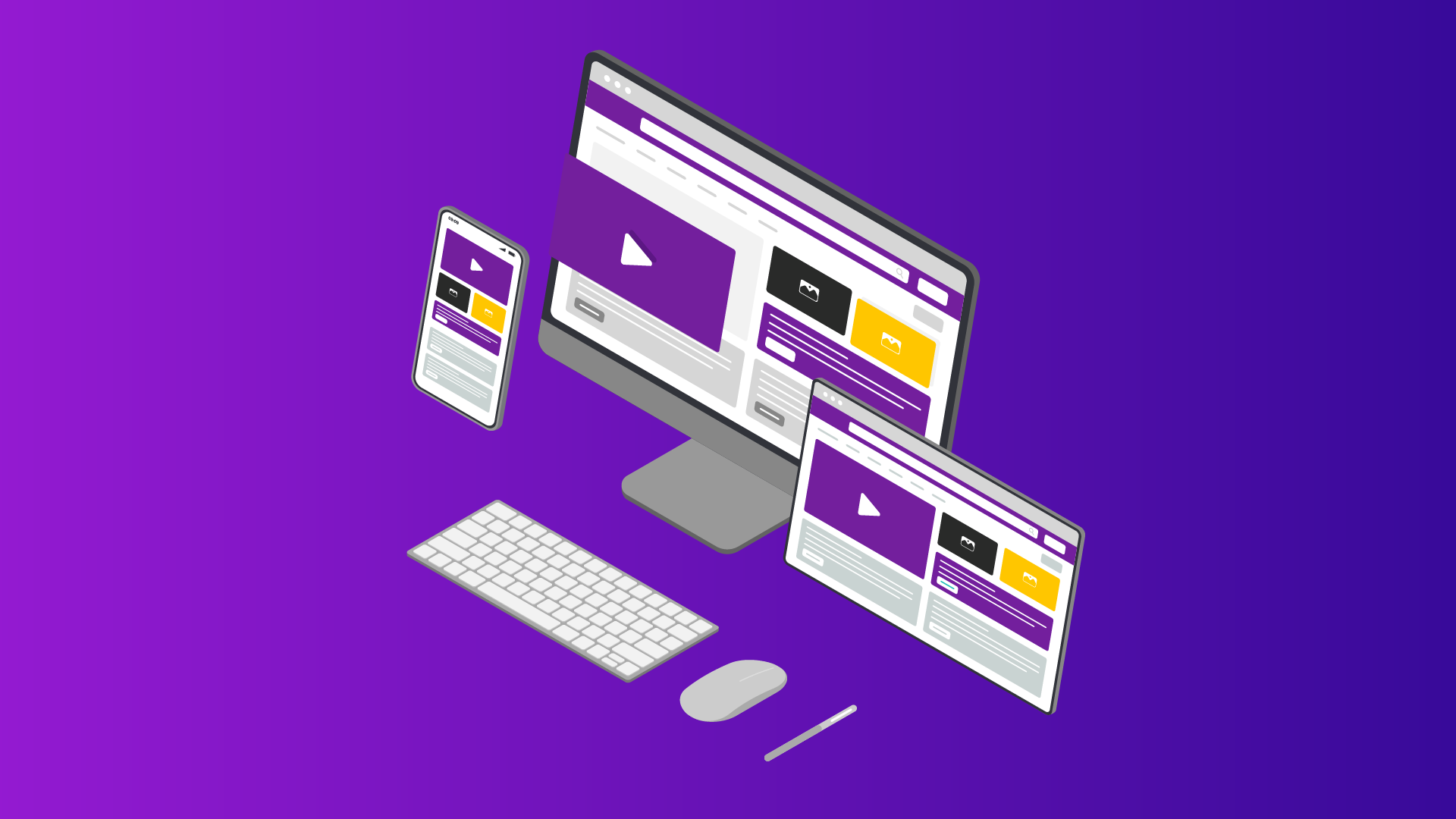What are Native Ads? Complete Guide
It’s 2023, the era where technology and user experience reign supreme. The ad tech market is in flux signified by the upcoming demise of third-party cookies, direct buys making a comeback, and publishers carefully vetting ad tech vendors to optimize the supply path. At the heart of this revolution lies the concept of native ads. From programmatic advertising to innovative ad tech platforms, the world of digital marketing has witnessed a transformative shift, and native ads have taken center stage.
The growing popularity of native ads can be attributed to their ability to capture user attention without causing irritation. As ad-blockers become more prevalent and users demand more relevant content, native ads have emerged as a key strategy for brands to connect with their target audience. Advertisers have realized that creating ads that don’t feel like ads is a win-win: users are more likely to engage, and brands can convey their message more effectively.
What are native ads?
Native ads are a type of ads or a form of advertising that seamlessly integrate with the environment in which they appear, creating a user experience that is both engaging and unobtrusive. These ads are carefully crafted to align with the visual and stylistic elements of the platform, ensuring that they blend naturally with the surrounding content.
This subtle integration allows native ads to capture users’ attention without causing disruption or irritation, maintaining a high level of visibility while respecting the context in which they are presented. The essence of native ads lies in their ability to resonate with the platform’s unique look and feel, resulting in a smooth, organic flow that captivates users and encourages them to engage with the content.
Why do advertisers use native ads?
In the list of most to least intrusive ads, native ads are typically considered the least intrusive among the various types of digital advertisements.
They provide a more organic user experience. Native ads can take various forms, such as sponsored articles, promoted social media posts, recommended content widgets, and more. The key characteristic of native ads is their integration into the platform, making them appear as if they belong within the content, which distinguishes them from other types of ads.
What are examples of native ads?
Here’s an example of native ads by The New York Times which is an in-content ad. This advertisement seamlessly integrates with the website on multiple levels, engaging various senses, from visual perception to interactive elements and even auditory cues.
The ad’s responsiveness enhances user interaction, making it interactive in every conceivable manner while harmonizing perfectly with the content format and the overall context of the site. Upon interaction through clicks, it seamlessly guides users to explore additional pages, extending the journey beyond the initial point of contact.
What are the types of native ads?
Aside from the above example, there are varied types of ads under the umbrella of native advertising, each with its own format and characteristics. Here are some common types of native ads:
- In-Feed Ads
These are native ads that appear within a platform’s natural content feed. They blend seamlessly with the surrounding content, whether it’s in a social media feed, news website, or other content stream.
- Sponsored Content
These are often longer-form articles or videos that are created by brands but presented in a way that fits the platform’s content style. They provide value to the audience while subtly promoting the brand’s message.
- Recommendation Widgets
These are widgets typically found at the end of articles or on a website’s sidebar, suggesting related content. While some of the recommendations may be genuine content, others may be paid native ads.
- Search Ads
Native search ads appear as sponsored results within search engine results pages. They look similar to organic search results, but they are marked as “sponsored” or “ad.”
- Promoted Listings
Often seen on e-commerce websites or online marketplaces, promoted listings are products that are given extra visibility by being promoted to the top of search or category results.
- In-Ad Content
These native ads incorporate the ad into the content in a way that appears as a seamless part of the user experience, such as an interactive map or a quiz.
- Custom Native Ads
Some platforms offer custom native ad formats that are tailored to the specific design and functionality of the site. These can be highly effective in matching the user experience.
The existence of various types of native ads serves multiple purposes and is driven by diverse objectives, messaging strategies, ad formats, and content formats. Here’s why the diversity in native ad types is essential:
- Objective Diversity
Different types of native ads cater to specific campaign objectives, whether it’s brand awareness, click-throughs, conversions, or engagement, ensuring that each ad aligns precisely with its intended outcome.
- Tailored Messaging
The range of native ad formats empowers advertisers to convey messages that suit their target audience, whether it’s informative, promotional, or event-driven, enhancing the relevance and impact of the advertisement.
- Ad and Content Format
The variety in native ad types ensures that they blend seamlessly with the look and feel of various platforms, whether it’s a social media feed, news site, or e-commerce platform, enhancing the overall user experience.
- Audience Segmentation
Advertisers can strategically choose from different native ad formats to appeal to specific audience segments, ensuring that the content resonates with the preferences and interests of the intended viewers.
- Platform Compatibility
The adaptability of native ad types to different platforms ensures that the ads function seamlessly within the unique design and functionality of each platform, providing a cohesive user experience.
- Multi-Campaign Flexibility
Advertisers running multiple campaigns concurrently can leverage various native ad formats, allowing them to optimize each format to suit the distinct goals and messages of each campaign, leading to more effective results.
What are the benefits of native ads?
In today’s dynamic digital landscape, there are many benefits of incorporating native ads in the ad and content strategy.
- Adaptability to a Cookieless World
As cookies become less reliable due to privacy regulations and user preferences, native ads shine as a format compatible with cookieless world. Native ads rely less on user tracking and more on content relevance and user experience. This adaptability ensures that native ads remain effective, providing advertisers with a sustainable way to reach their audience without relying heavily on third-party cookies.
- Ideal for Mobile Advertising
The mobile-first era demands ad formats that seamlessly integrate with the mobile experience. Native ads fit this criterion perfectly. Their responsive design ensures a smooth transition from desktop to mobile devices, preserving the user experience while delivering engaging and non-disruptive content. Native ads fit organically for in-app advertisement and mobile websites, reducing the likelihood of ad blockers and ensuring higher user engagement.
- Essential for Contextual Advertising
Contextual targeting has become paramount in effective advertising. Native ads excel at contextual relevance by blending harmoniously with the surrounding content. They take into account the platform’s design, user expectations, and the topic of the content, resulting in a more natural and appealing user experience. Contextual advertising enhances user trust and engagement, increasing the likelihood of positive actions such as clicks and conversions.
- Improved User Engagement
Native ads are designed to be engaging without being intrusive. By seamlessly integrating with the platform’s aesthetics, they don’t disrupt the user’s browsing experience. This approach fosters user trust, making audiences more receptive to the advertiser’s message. The non-intrusive nature of native ads leads to higher eCPM, click-through rates (CTRs) and longer time spent interacting with the content.
- Higher Brand Perception
The subtle and non-disruptive nature of native ads enhances the brand’s image. When users encounter native ads that align seamlessly with the content they’re consuming, it reflects positively on the advertiser. This elevated brand perception fosters trust and credibility, driving brand loyalty and increasing the chances of future interactions.
What is the difference between native ads and banner ads?
Banner ads were once popular and widely used, especially during the early days of digital advertising. They were a prevalent form of online advertising, appearing in various shapes and sizes across websites and platforms. However, over time, the effectiveness of banner ads began to decline for several reasons and native ads took over.
Native Ads vs Banner Ads
| Native Ads | Banner Ads | |
| Integration | Seamlessly blends with the content environment. | Often appear as separate graphical banners. |
| Appearance | Match the platform’s look and feel. | Have a distinct design, usually rectangular. |
| Disruption | Less disruptive, feel like part of the content. | Can be more disruptive to the user experience. |
| User Engagement | Generally higher due to natural integration. | May have lower engagement due to banner blindness. |
| Click-Through Rates | Often have higher CTRs compared to banner ads. | CTRs may be lower due to banner fatigue. |
| Contextual Relevance | Emphasize contextual alignment with content. | May struggle with context on certain sites. |
| Mobile Friendliness | Tend to be more mobile-friendly and responsive. | Can be less optimized for mobile devices. |
| Ad Blockers | Less likely to be blocked by ad blockers. | Prone to being blocked by ad blockers. |
How can publishers increase their ad revenue with native ads?
Native ads play a crucial role in the publisher’s ecosystem. By adding this ad format to their monetization strategy, they can leverage the power of native ads to enhance both user experience and maximize their ad revenue.
- Choosing the right ad tech partner
Collaborating with the right programmatic ad tech platforms that support native ads is crucial for publishers. Native ads require a seamless integration into the content environment, and demand partners play a pivotal role in ensuring that the ads align with the platform’s aesthetics, thereby enhancing user experience. Publishers should carefully select demand partners that offer native ad capabilities to ensure a harmonious blend of content and advertising.
- Crafting ad-friendly websites
To fully harness the potential of native ads, publishers should optimize their websites for advertising integration. This involves designing layouts that seamlessly accommodate native ad formats, such as in-feed ads, recommended content widgets, and sponsored articles. A well-designed website that naturally incorporates native ads enhances user engagement while maintaining the integrity of the content.
- Paying attention to content relevance
Relevance is paramount when it comes to native ads. Publishers must maintain strict quality control over the content that surrounds native ads. Ensuring that the ads align with the interests and expectations of the audience is essential.
Native ads should complement the surrounding content, enhancing the user’s experience rather than disrupting it. Publishers should consider content relevance as a crucial factor in delivering value to both advertisers and users.
- Measuring and optimizing performance
Publishers should track the performance of native ads diligently. Metrics such as click-through rates (CTRs), engagement levels, and user feedback are essential for evaluating the effectiveness of native ads.
By continuously analyzing these metrics, publishers can identify what works best for their audience and make data-driven optimizations, leading to improved results over time.
- Impact on revenue generation
Native ads can have a positive impact on revenue when implemented effectively. By offering advertisers a non-disruptive, engaging environment, publishers can attract premium advertisers willing to pay a higher price for native placements.
However, revenue generation should not compromise the user experience. Striking the right balance between ads and user experience is key to sustainable success.
Native ads exemplify the elegance of simplicity, seamlessly blending into the content without overwhelming the user’s visual experience. They guide the user’s gaze effortlessly through the content, creating a harmonious coexistence where users can enjoy the content while deriving genuine value from the incorporated advertisement.
So, here’s to a future where native ads are more than mere options; they are the guiding principles where creative ingenuity seamlessly aligns with user preferences. This future envisions advertising as a valuable and integrated part of the content journey, creating a win-win scenario for all.




Leave a Reply